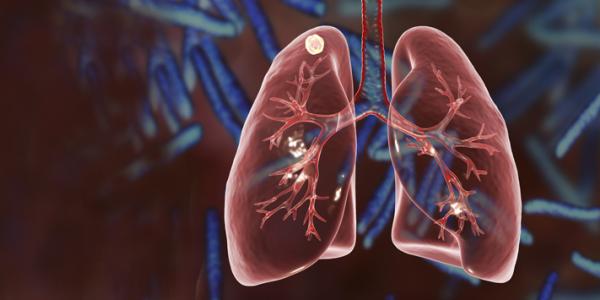


If you’ve been told you have a lung nodule, you may be worried about lung cancer. Just hearing the word “cancer” can be stressful. But most lung nodules are not cancerous. Don’t panic — but do talk to your doctor about your concerns and what your next step should be.
Here are answers to some common questions about lung nodules:
Also called a pulmonary nodule, a lung nodule is a round spot in the lung that is more solid than normal lung tissue. It’s usually detected on an X-ray or computed tomography (CT or CAT) scan. Lung nodules are quite common. In fact, lung nodules are found in up to half of the people who have chest X-rays.
Most lung nodules are caused by scar tissue, a healed infection or an irritant in the air you’ve breathed. Inflammation that is not related to an infection can also cause nodules. Rheumatoid arthritis is one cause of inflammation that can lead to a lung nodule. Noncancerous growths such as fibromas (benign tumors made of connective tissue) can also appear as nodules.
However, some lung nodules are cancerous. If a nodule is cancer, it will probably grow fairly rapidly. If it doesn’t, it’s probably not cancer.
Most of the time, lung cancer doesn’t cause symptoms until it has spread to other parts of the body. If it can be detected in earlier stages, when it is still confined to the lungs, it’s easier to treat and has a higher survival rate. One way to detect early-stage lung cancer is to investigate any spot in the lungs. That’s why you don’t want to ignore a lung nodule. Talk to your doctor about a plan of action. You may want to get a second opinion to make sure you have as much information as possible.
Most nodules are noncancerous (benign), and a benign nodule will not turn into cancer. But some nodules turn out to be cancerous (malignant).
Small nodules, especially those that are smaller than 1 centimeter, are rarely cancerous. Larger nodules, larger than 3 centimeters, are usually called lung masses and have a higher chance of being cancerous than small ones.
The chance that your lung nodule is cancerous depends on many factors. Your doctor can give you an estimate if you want one.
In most cases, you’ll simply need regular CT scans to make sure the nodule isn’t growing or changing. This approach is called active surveillance or watchful waiting. If the nodule doesn’t grow over a two-year period, it’s unlikely to be cancer. If it does grow, you’ll probably need more imaging tests or a biopsy to rule out cancer.
A lung biopsy involves taking a small piece of lung for further testing. It’s considered safe, but as with all medical procedures, there is some risk and expense involved. That’s why doctors usually don’t recommend a biopsy right away. It’s safer to monitor the nodule through active surveillance for up to two years. If it doesn’t grow, you probably won’t need further surveillance or testing.
Talk to your doctor about your preferences and any concerns or questions you have.
Unfortunately, most lung cancers don’t cause symptoms until they have spread to other parts of the body. But some people may have symptoms. Keep in mind that early symptoms of lung cancer are similar to symptoms of many other conditions, so don’t panic, but do see your doctor. The most common symptoms of lung cancer are:
If lung cancer spreads, it may cause:
You may have heard that lung cancer is the deadliest form of cancer or seen frightening statistics. But keep in mind that every case is different. If your nodule is small, it’s likely to be early-stage cancer, which is easier to treat. Your age, overall health and other factors also play a role. For the best outcome, make sure your cancer care team is experienced with lung cancer and has access to the latest treatment options.
Learn about El Camino Health’s Lung Nodule Program, which provides active surveillance of lung nodules and other risk factors for lung cancer.
Lung cancer is the third most common cancer in the US, behind skin cancer and breast cancer (in women) and prostate cancer (in men). Early detection is the key to effective treatment. Take this free assessment and in just a few minutes: identify your lung cancer risks, how to minimize your risk factors and what to do if you are at risk. Take the Assessment Now
This article first appeared in the November 2019 edition of the HealthPerks newsletter.

Identify your risk factors and what to do if you are at risk.